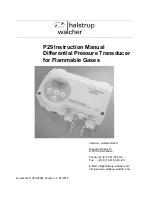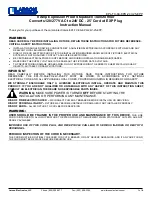
36
3. Operating Principles
The TM Series In-Line Torque Transducer can be defined as an inductive transducer operating on
the basis of a differential voltage transformer having a variable coupling factor.
3.1
torque transduCer arChiteCture
The part of the transducer effectively measuring the torque is composed of three elements: a shaft
with a deformation zone, a pair of coils and two metallic cylinders.
Figure 3–1 TM Torque Transducer Principal Elements
The primary and secondary coil composing the differential transformer are separated by two
concentric aluminum cylinders. These cylinders are connected to the torque measuring shaft—the
external cylinder on one side of the deformation zone and the internal cylinder on the opposite side.
both cylinders have two series of slots on their surface. When there is no torque being applied to the
measuring shaft, the slots in both cylinders fail to overlap. because the cylinders are non-magnetic,
there is total screening and differential induction cannot be generated between the primary and
secondary coil.
As torque is applied to the shaft, the deformation zone undergoes increasing angular deformation.
As torque is sensed, the overlap between the slots increases creating an opening for the induction
flux. The amount of differential induction is proportional to the applied torque. In this way, when
the primary coil is excited by a sinusoidal voltage, the secondary coil produces a voltage whose
magnitude is dependent on the applied torque.





































